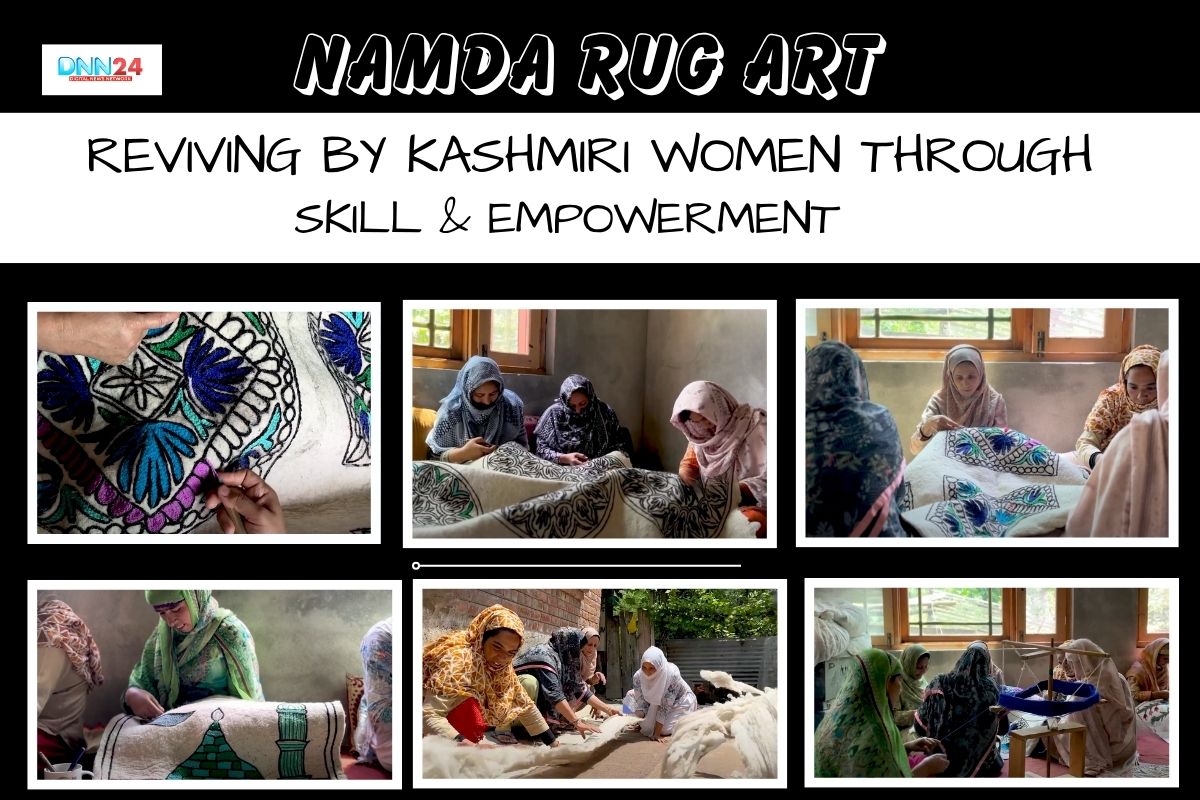Beautiful is what is happening in the lanes of Saida Kadal, Srinagar, in peace. Women are bringing back to life an art that was slowly disappearing from Kashmir’s cultural landscape. The old Namda rug art weaving, which adorned the floors of the Mughal palaces, is now getting a new life through the deft hands of the local female artisans.
This old neighbourhood has a special training centre established by the Department of Handicrafts and Handloom Kashmir. In this case, 20 unemployed women come together daily to get acquainted with the complex art of felt-making. These women are not just learning a craft—they are becoming the guardians of Kashmir’s precious heritage. Every day is a discovery as they learn the old-time-old methods their grandmothers knew like the back of their hands.
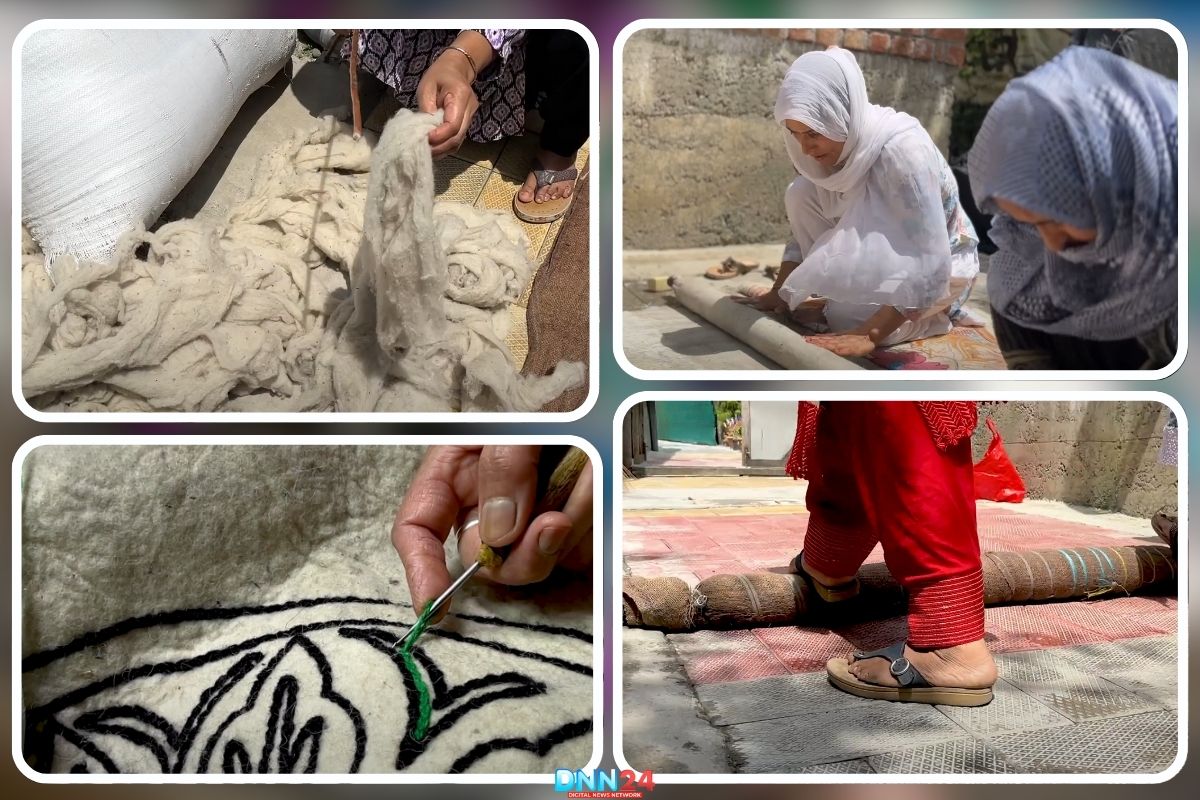
The special thing about this initiative is how it mixes tradition and empowerment. They give the women 1000 rupees per month to support them in the training period so that they can concentrate fully on the learning process without considering their financial needs. Most of these women fantasize about opening their small businesses after training. The government has committed to giving them artisan credit cards and loans to enable them to start their entrepreneurial activities. It is not mere skills development, but the best example of economic empowerment.
The Ancient Namda Rug Art Making: Understanding
Namda is not a regular carpet. The word comes from Persian ‘nam’, meaning moist, which gives us a hint about how it is made. Namda rugs are made by a very interesting process known as felting, unlike normal carpets, which are made thread by thread. A magical mix of water, pressure, and ancient artworks of the past turns raw wool into thick and durable floor coverings.
It starts with selecting the wool, which should be cleaned and prepared meticulously. The thick layers of wool are then laid out on a cloth base. These layers are sprinkled with water, and the most labor-intensive process follows: rolling and pressing. The artisans roll the layers of wool with great pressure, and after hours, the single fibres become locked together permanently. This makes a high and coherent fabric that is durable for decades.
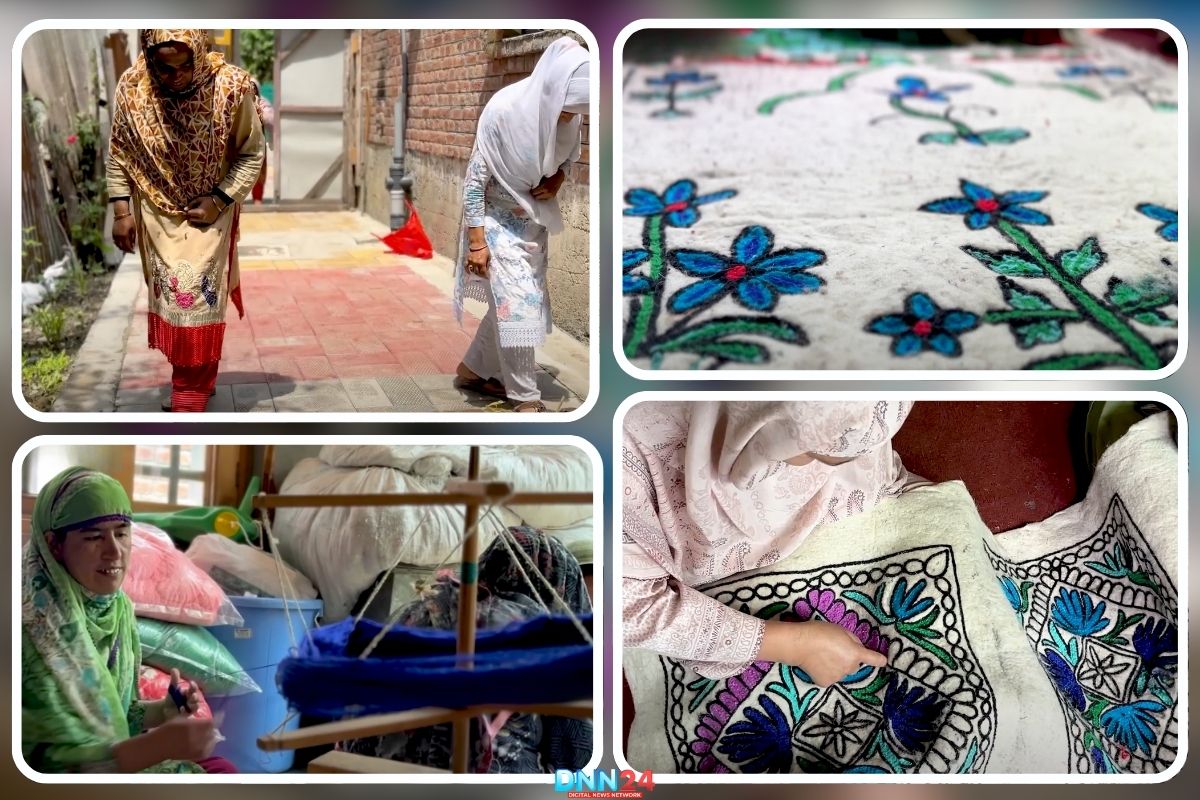
The best part about Namda is that it does not need any machine or sophisticated equipment. It is all handmade, which makes each piece individual. The ancient felting skills have been perfectly maintained in Kashmir over the centuries. These rugs were much sought after during the Mughal era because of their durability and ability to keep one warm. Later, during Zainul Abidin’s reign, the art of embroidery was added to Namda, creating the beautiful decorative patterns we see today. This felting and embroidery work combination is the reason why Kashmiri Namda is famous in the world even today.
The Cultural Namda Rug Art Revival by Women Artisans
The essence of this revival saga is the spirit of Kashmiri women who did not want to lose their heritage. Women of various ages cooperate at the training centre, exchange techniques, and motivate each other. Some are young girls who have just left school, and others are experienced homemakers who want to add to the family income.
Imran Ahmad Shah, Junior Craft Instructor at the Department of Handicrafts and Handloom, says these women have taken the training program positively. In a matter of months, they have mastered the basics of felt-making and are now beginning to learn the complex embroidery work that makes each Namda special. They are so committed that they come in early, stay late, and practice at home to hone their skills.
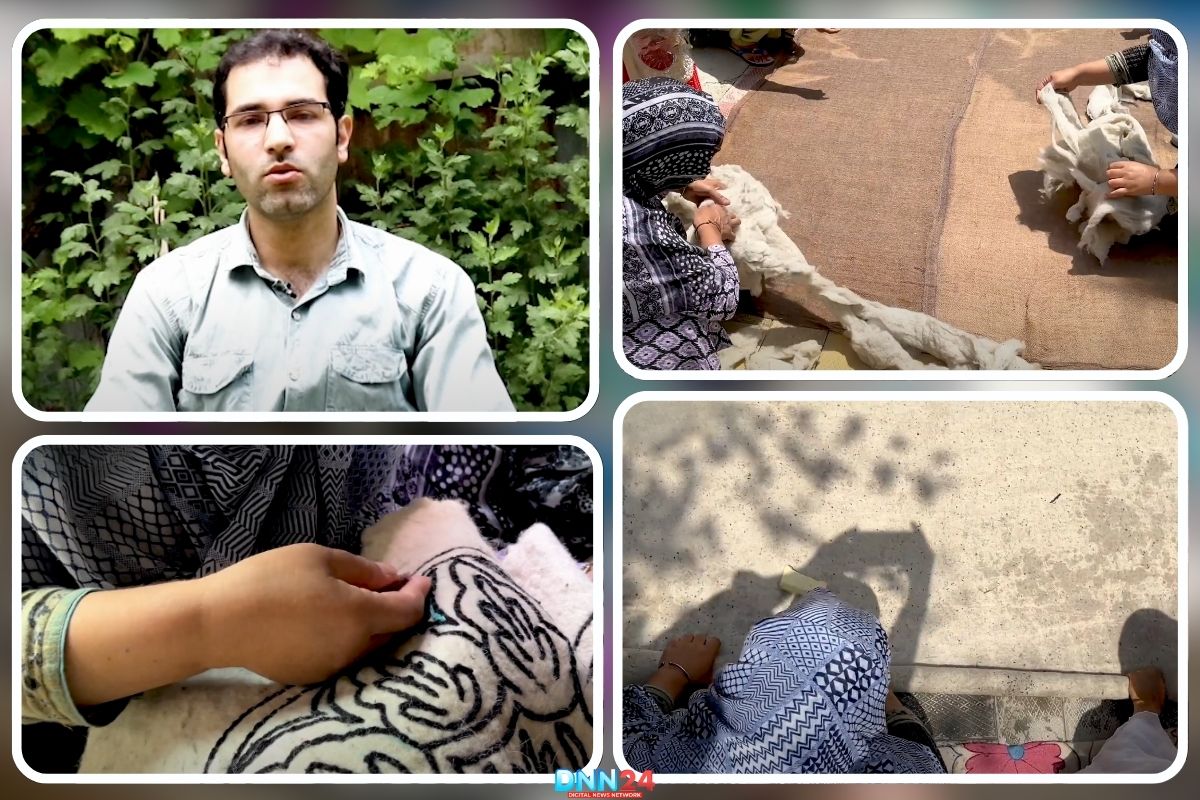
The change can be observed not only in their technical skills but also in their confidence level. Most of the women who used to be reluctant to talk about their aspirations are now engaged in discussing business and market strategies. They are being taught about quality control, pricing, and customer requirements. Others are already accepting small orders from local customers, and this is their first earnings from this traditional craft.
Through the ripple effect, this training is spreading beyond the walls of the centre. Women are passing the knowledge to their daughters and neighbours, creating a cadre of skilled artisans in the community. This grass-roots method will ensure that the knowledge will not be lost once again and will still grow naturally in future years.
The Namda Rug Art New Age Combines with the Old
The reintroduction of Namda craft occurs at the most opportune moment, when the world markets are increasingly interested in handmade and sustainable products. These felted rugs are also eco-friendly, and their authenticity is what captures the attention of international buyers. Namda rugs are the opposite of machine-made carpets because they are made by people and are the product of the culture.
The government’s role has been crucial in bridging tradition and modernity. They have eliminated the financial obstacles that usually hinder the acquisition of new skills by women by offering training facilities, monthly allowances, and future business assistance. The availability of artisan credit cards will imply that these women will be able to enjoy formal banking facilities and expand their businesses in a methodical way.
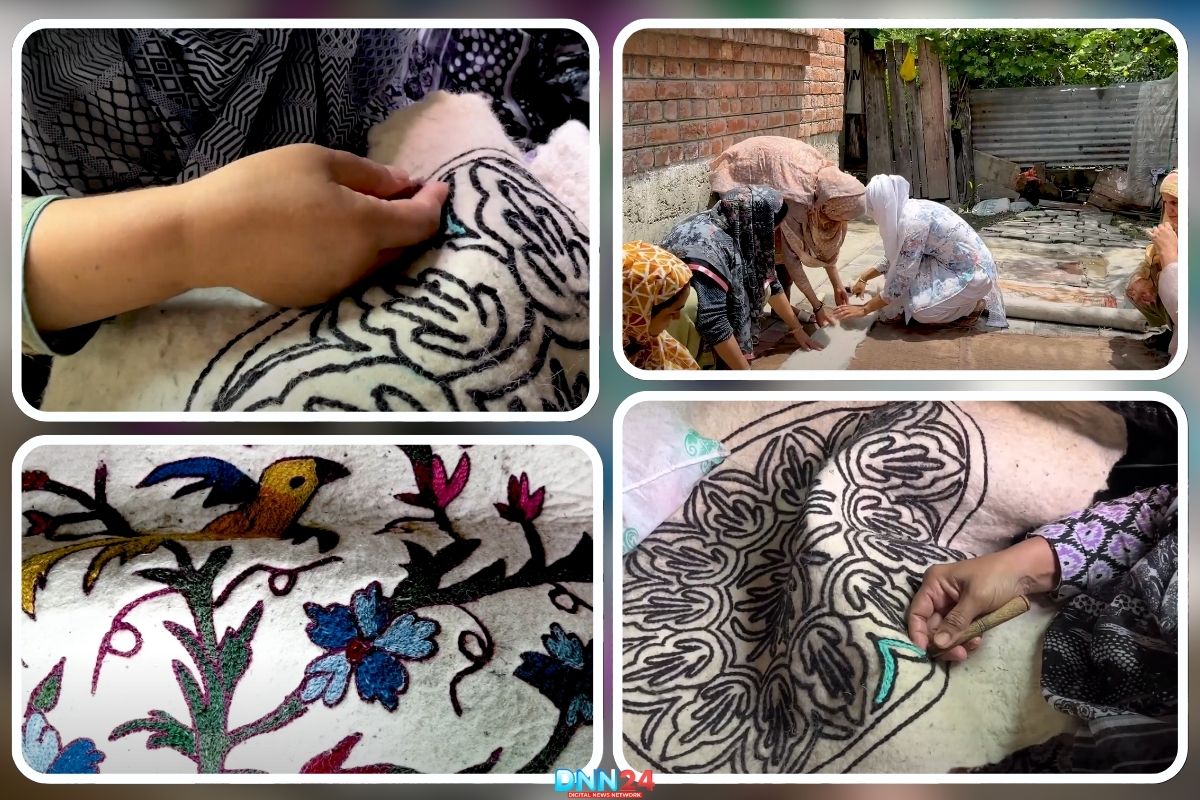
E-commerce and digital platforms are providing new ways for artisans to directly access customers. Many women are already experimenting with online sales channels and social media marketing. The hand-woven Namda rugs are exclusive in nature, and this aspect qualifies them for the exclusive handicraft market, both locally and abroad.
This initiative is proving successful to the extent that it is inciting other initiatives in other regions of Kashmir. Traditional crafts such as chain stitching, carpet weaving, and woodwork are also being revived using female-oriented training. This comprehensive cultural maintenance process via economic empowerment establishes a sustainable model that the other regions can adopt.
As these women continue their journey from learners to entrepreneurs, they are not just reviving an ancient art form—they are writing a new chapter in Kashmir’s cultural story. Every Namda rug they make continues centuries of tradition and gives hope and prosperity to the future.
Also Read: Tawheeda Akhtar: Weaving Hope and Empowerment Through Shining Star Boutique
You can connect with DNN24 on Facebook, Twitter, and Instagram and subscribe to our YouTube channel.

